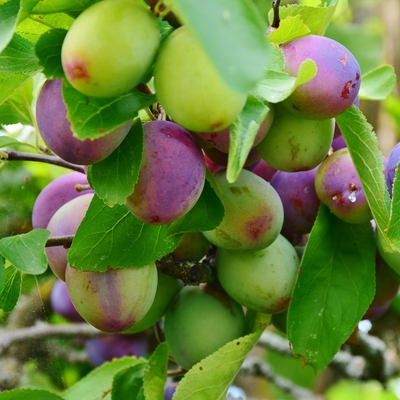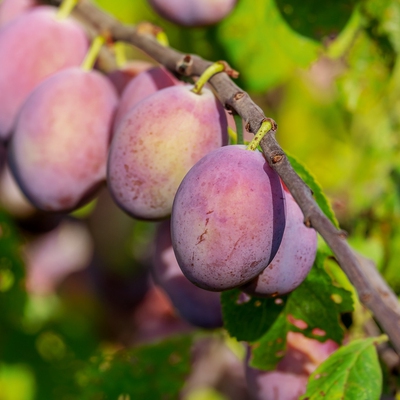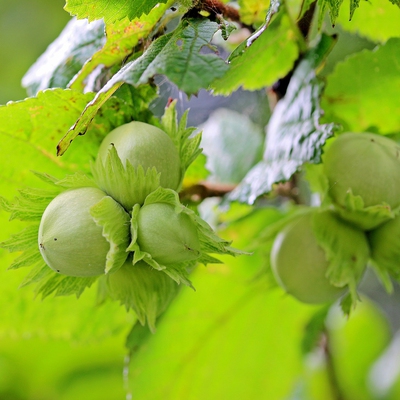Interested in growing Plums? This guide has everything you need to know, from sun requirements to pests and harvesting tips.
 Soil
Soil
What soil is good for Plums?
Plum trees will do well in most well draining soils, with plenty of compost mixed in.
Like most fruit trees, Plums will not tolerate waterlogged soil and will develop root rot as a result. Avoid planting in heavy clay unless the soil has been amended. Heavy soils can be improved by incorporating gypsum and organic matter and mounding the soil before planting to improve drainage.
 Position
Position
How much sun do Plums need?
Plant your Plum tree in a full sun position.
 Frost Tolerant
Frost Tolerant
Are Plums frost tolerant?
Yes, Plum trees are frost tolerant.
 Spacing
Spacing
How much space do Plums need?
Space your Plum trees roughly 5m apart.
 Planting
Planting
When should I plant Plums?
Late autumn or early spring is the best time to transplant most dormant plants. Plants, with the exception of bare-root, can be transplanted at anytime between when the ground thaws and when it freezes (so anytime if you are in a frost free climate). However, if transplanting in the heat of summer, you'll need to be diligent in watering and provide extra shade for your plant in the first few weeks after transplanting.
Dig a hole 2-3 times the width of the root ball. The hole should allow the plant to sit at the same level in the soil as it was previously. Fill the hole with soil ensuring the crown of the plant, where roots and stem meet, is level with the soil surface.
Plant out in the early morning or evening and/or on an overcast day. Avoid planting at peak sun times or on windy days, this will allow your plants to settle in comfortably and protect them from windburn and sunburn.
 Feeding
Feeding
What do I feed Plums?
Top-dress the soil around the Plum tree with well-rotted organic matter in spring, along with a balanced organic fertiliser. Add a 2-3 inch layer of mulch around the tree up to the drip line to retain moisture (be careful not to pile mulch against the tree trunk as this may lead to trunk rot and disease).
 Harvesting
Harvesting
When can I harvest Plums?
Harvest the Plums when they have changed from green to the colour of the variety planted. Plums are usually eaten when they are slightly soft to touch.
 Pests
Pests
What pests do Plums get?
Pests that can affect Plum trees include: Caterpillars, Scale, Leaf Roller, Plum Sawfly, Aphids, Fruit Fly, Weevil.
 Diseases
Diseases
What diseases do Plums get?
Diseases that affect Plum trees include: Armillaria root rot, Black Knot, Brown Rot, Powdery Mildew, Rust, Bacterial Canker, Bacterial Spot, Crown Gall, Phytophthora Root and Crown Rot, Plum Pox Virus.
 Notes
Notes
Is there anything else I need to know about Plums?
Cover the Plum trees with netting to protect the fruit from birds and fruit bats.
At the end of the season, prune the tree in order to remove old or unproductive wood. Open up the centre to let light and air in by removing any overlapping branches, this will help to prevent disease.
 Troubleshooting
Troubleshooting
How do I troubleshoot my growing problems?
Many Plum trees require cross-pollination, meaning more than one Plum tree needs to be planted for successful fruit set. Some varieties however, are self-fruitful making it possible to plant a single tree and still harvest Plums.






